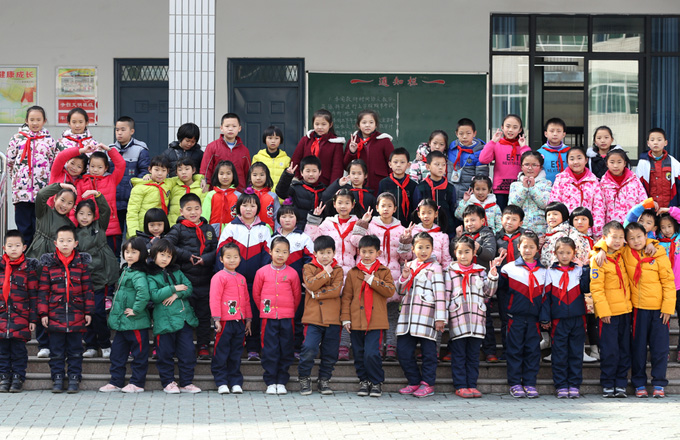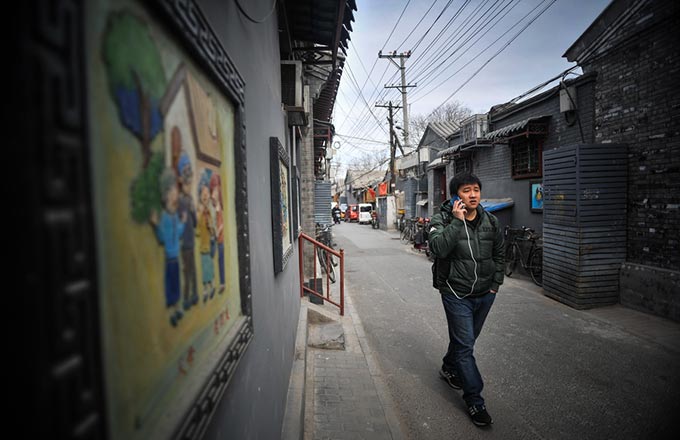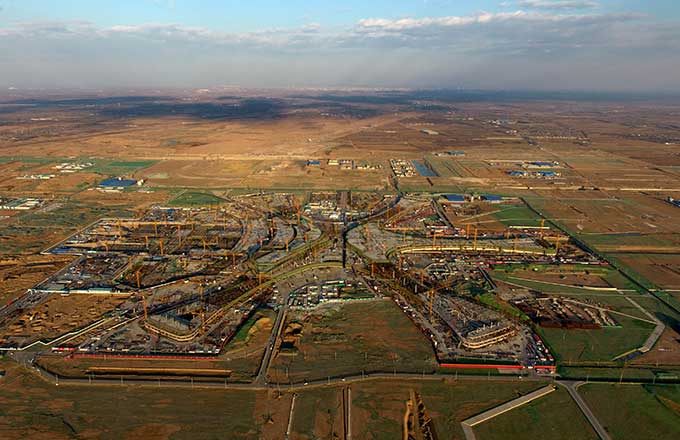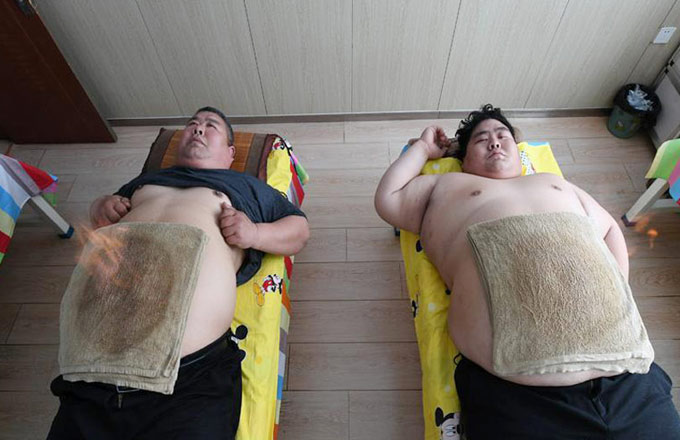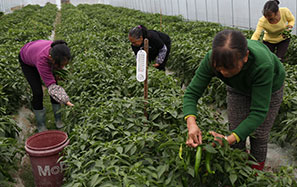China issues white paper on judicial reform of Chinese courts
IV. Judicial Power Serving the People
Exercising judicial power for the people fairly is the primary work of people's courts. The Supreme People's Court has been reforming the system of acceptance and handling of cases, improving the national judicial assistance system, pushing forward the establishment of litigation service centers and people's tribunals, improving the multiple dispute resolution mechanisms, deepening the reform of enforcement system and mechanism, carrying out the pilot program of public interest litigations and pilot reform on the methods of adjudication of family affairs and other measures, to enhance the exercise of judicial power for the people and make the people have a stronger sense of gain in the judicial reform.
Implementing the case filing register system in an all-round way. In May 2015, the Supreme People's Court reformed the court case acceptance system by changing the case filing review system into the case filing register system, which requires each case that should be accepted and handled by the people's court shall be placed on file and each lawsuit shall be accepted and handled by the people's court, thereby effectively solving the "difficulty in case filing". In 2016, the courts nationwide registered 16,302,994 cases in total, up 12.48% year on year, with an on-the-spot case registration rate of 95%, among which civil cases increased by 6.58%, administrative cases increased by 2.31% and criminal cases of private prosecution increased by 74.44% respectively year on year. The people's courts at all levels have made continuous efforts to consolidate the achievements already made in the reform of case filing register system and with the aid of information technology, to improve the efficiency and convenience of case filing. The courts in all regions have simplified the case filing procedure and by means of notification of case filing, one-off list of supplements and corrections, request for response within prescribed time limit and otherwise, ensure successful filing of cases by the litigants in one attempt. The courts have also made efforts to promote online and electronic case filing, and by means of self-service equipment, litigation service website, 12368 litigation service platform, mobile client and other media, opened the online case filing, online submission of documents, online payment of fees and other functions, to further facilitate case filing. The courts in Pudong, Shanghai developed a "two dimension code" self-service case filing system, through which more than 1,000 cases were filed within one month, with the average time of filing of a case being only 15 minutes. The courts in Quanzhou, Fujian took the lead in introducing the cross-city and trans-regional case filing service, rendering litigants able to complete the case filing procedures at any court in the city. The courts in Beijing established the mechanisms of supervision over case filing and rapid handling of complaints over case filing, to promptly respond to and rectify the problems existing in case filing reported or complained by the litigants. In 2016, the courts in Beijing accepted and handled complaints of failure in case filing lodged by more than 1,300 people, thereby ensuring the effective implementation of the case filing register system.
Enhancing litigation services. The Supreme People's Court promulgated the guidelines on promoting the establishment of litigation service centers at people's courts. The courts in all regions have generally established litigation service centers, and with the aid of information technology, established litigation service halls, litigation service websites, 12368 litigation service hotline, mobile client and other litigation service platforms, to satisfy people's diversified judicial demands. At present, 99% of the courts nationwide have established the litigation service halls, over 2,200 courts have opened litigation service websites, over 800 courts have opened mobile litigation service APPs, and over 1,900 courts have opened 12368 litigation service hotline. The services provided by such service platforms to the people include online case filing, online payment of fees, online mediation, access to information, submission of documents, examination of case files, electronic service of legal process, contact with judges, etc. The courts in Tianjin have made efforts to improve the standardization of litigation services and provide special litigation services such as video mediation, mental guidance and palm-top court. The courts in Shanghai have established a big data litigation service system centering on litigation service halls and comprising 11 sub-systems, including 12368 litigation service platform and lawyer service platform, formed a comprehensive litigation service system providing more than 30 kinds of services, including case filing and registration, guidance to litigation, post-judgment answer to questions and legal assistance, and basically achieved the goal of having litigation service centers provide all the litigation and non-litigation services beyond the scope of court trials. The courts in Anhui have established family affairs, labor, property and other dispute mediation windows at their litigation service centers, as well as workstations of members of the Party congress, people's congress and people's political consultative conference, lawyer's offices and people's mediation rooms, and carried out online, remote and diversified mediation of controversies and disputes, and achieved remarkable success. The courts in Zhejiang have promulgated the discipline and code of conduct for service windows, unified service facilities and standards, publicized the list of services, and actively explored the establishment of centralized service of legal process, preservation and expertise mechanisms, thereby effectively standardizing the litigation services and improving the level of litigation services.
Enhancing the establishment of people's tribunals. The Supreme People's Court has promulgated the guidelines on the work of people's tribunals, actively developed the structure of courts relying mainly on central courts and supplemented by community courts and circuit adjudication points, and optimized the regional layout of people's courts and proportion of judicial personnel. The courts in Henan have established a centralized court information control center, realized networking and data sharing among all the 184 courts and 698 detached tribunals in the province, developed the electronic signature system and the function of trans-regional circulation of electronic case files and realized cross-county (city) filing of certain cases, enabling litigants to file cases with local courts or people's tribunals. In light of the characteristics of mountain area, the courts in Chongqing have vigorously pushed forward the establishment of court liaison points, established 272 litigation stations and 1,142 liaison offices, and employed 6,227 liaison persons to facilitate the filing of lawsuits by the public.
Improving the multiple dispute resolution mechanisms. On April 9, 2015, the Supreme People's Court held a meeting on pushing forward the reform of multiple dispute resolution mechanisms in the courts nationwide, designated 50 pilot courts in this regard and set the modern principles of dispute resolution featuring leadership by the State, promotion by the judiciary, participation by the society, adoption of multiple methods and safeguard by rule of law. On June 28, 2016, the Supreme People's Court promulgated the Opinions on Further Deepening the Reform of Multiple Dispute Resolution Mechanisms in People's Courts and the Provisions on Mediation Specially Invited by People's Courts, to effectively guide the reform of multiple dispute resolution mechanisms in the people's courts nationwide. The Supreme People's Court has established the multiple securities and futures-related dispute resolution mechanisms with the China Securities Regulatory Commission and the litigation-mediation connection mechanism for insurance-related disputes with the China Insurance Regulatory Commission respectively. As of December 2016, the courts nationwide had established 2338 litigation-mediation connection centers, and recruited nearly 20,000 specially invited mediation organizations and more than 60,000 specially invited mediators. With the instruction and assistance of the people's courts, these mediation organizations have solved over 10 million disputes every year. The people's courts at all levels have established litigation-mediation connection platforms in various forms which have operated in a standard manner and exercised the functions of diversion of cases, advance mediation, mandated mediation, entrusted mediation, judicial homologation, etc; established a lot of new systems such as specially invited mediation, full-time court mediators, mediation by lawyers, notarized mediation and mediation by experts; and improved the mechanism of connection between courts and administrative organs, people's mediation organizations, trade mediation organizations, commercial mediation organizations, arbitration institutions and notary offices. The higher people's courts in Beijing, Hebei, Shanghai, Zhejiang, Anhui, Sichuan and other regions and the Shanghai Maritime Court have carried out the pilot program of establishment of online mediation platforms to improve the efficiency of dispute resolution. The courts at two levels in Meishan, Sichuan fully mobilized and utilized various kinds of resources for dispute resolution, solved 80.72% of controversies and disputes by means of alternative dispute resolution between 2014 and 2016, with only 7.06% of cases entering into the judicial procedures to be adjudicated, thereby creating the "Meishan Experience" connecting the litigation and alternative dispute resolution. The Yuemu District People's Court in Changsha, Hunan has improved the pre-litigation mediation procedure for specific types of cases, adopted a three-in-one dispute resolution mode comprising pre-litigation diversion, in-process entrustment and judicial homologation, made full use of social mediation resources and solved a lot of disputes outside the litigation procedure, thereby greatly improving the judicial efficiency. The courts at two levels in Maanshan, Anhui developed an upgraded version of multiple reforms, solved over 25,300 disputes prior to the litigation procedure by various means of mediation, conducted cross-city, remote and online mediations, and achieved a successful rate of online mediation of 95.1% in 2016. Zhejiang has taken the lead in establishing an online e-commerce court and arranged for mediators to conduct mediations online, which are not subject to time, space or regional limitations and can save the litigation costs of litigants, as a result of which the number of disputes entering into the litigation procedure has been reduced by half.
Improving the national judicial assistance system. On July 1, 2016, the Supreme People's Court promulgated the opinions on strengthening and standardizing the work of national judicial assistance conducted by the people's courts, requiring unity of acceptance and handling of cases, scope of assistance, standard of assistance, fund guarantee and appropriation of funds, and realization of "administration of the assistance system by law and handling of assistance cases according to judicial procedures". On September 18, 2016, the Supreme People's Court set up the judicial assistance committee, and the people's courts at all levels nationwide also set up their judicial assistance committees, which marks that the work of judicial assistance entered into a new era. In 2014 and 2015, the Central Government and local governments allocated RMB2.47 billion and RMB2.949 billion to the judicial assistance funds respectively, which went to over 80,000 persons. In the work of judicial assistance, the courts in Tianjin have strengthened the joint actions with the assistance provided by other judicial organs, social organizations and other provinces and cities, to realize seamless connection between judicial assistance and social security, and improve the accuracy, coverage and timeliness of judicial assistance. In the past two years, the courts in Tianjin handled 2,398 cases of national judicial assistance, and gave RMB61,549,600 in judicial assistance, namely RMB25,700 per case. The courts in Sichuan have classified the cases of judicial assistance into complicated ones and simple ones, had the cases of small-amount judicial assistance (in the amount of less than RMB30,000) handled by the business tribunals, and the cases of large-amount judicial assistance (in the amount of more than RMB30,000) considered by the judicial assistance committees, thereby simplifying the assistance process, and developed and operated an online judicial assistance platform to promote online, visual and standardized handling of cases of judicial assistance.
Deepening the reform on the handling of letters and visits involving lawsuits. The Supreme People's Court has been actively promoting the handling of letters and visits involving lawsuits in accordance with the law. The courts at all levels have been improving the working mechanism of separating litigation from letters and visits, solving the people's lawful and reasonable claims with earnest efforts, and safeguarding the order of handling of letters and visits involving lawsuits and social stability. The Supreme People's Court has strengthened the informatization of the handling of letters and visits involving lawsuits, preliminarily established the big data platform of the Supreme People's Court for handling letters and visits involving lawsuits which has five main functions, including reception of visitors, handling of letters, online video system to receive complaints and appeals, online filing of complaints and appeals, review and investigation of cases, and has realized interconnection with the higher people's courts. In 2016, through the platform, the courts nationwide received and handled 1.557,000 visits and 824,000 letters, received 14,000 complaints and appeals through the online video system, handled 12,000 complaints and appeals filed online, and reviewed and investigated 6,330 cases in total. The online video system to receive complaints and appeals has been connected with 3,445 courts, with a connection rate of 93.8%, thereby basically realizing the goal of enabling the people to lodge their complaints and appeals with the higher people's courts or the Supreme People's Court without going to the provincial capitals or Beijing.
Pushing forward the reform of the enforcement system. In order to solve the "difficulty in enforcement", the Supreme People's Court promulgated the Work Program for Basically Solving the Difficulty in Enforcement within Two to Three Years, aiming to vigorously pushing forward the reform of the enforcement system and mechanism. The people's courts are implementing the reform of separating trial from enforcement, and, in addition to the separation of the power of adjudication from the power of enforcement, have further divided the power of enforcement into the power to adjudicate on enforcement and the power to implement enforcement actions. The people's courts in all regions have explored the establishment of adjudicative tribunals for enforcement or special collegiate panels to exercise the powers to adjudicate on enforcement in a centralized manner, and have their enforcement bureaus or tribunals be responsible for the implementation of enforcement actions, thereby forming an enforcement command system that integrates the courts at all levels, acts jointly with the outsiders, is standard and efficient, and responds rapidly, and realizing centralized management, command and coordination of enforcement among the courts at all the four levels nationwide. The Supreme People's Court has improved the online enforcement examination and control mechanism, and established the mechanism of rapid information sharing and cooperation in online enforcement examination and control with the Ministry of Public Security. Over 3,100 courts nationwide have opened the online enforcement examination and control system, and most higher courts have established the three-level "point-to-point" online enforcement examination and control system covering the courts within their respective jurisdictions, thereby fundamentally changing the mode of enforcement examination and control and improving the efficiency of enforcement actions. Since the Supreme People's Court made the arrangement for "basically solving the difficulty in enforcement within two to three years", the number of cases of application for enforcement received has increased by 24%, and the number of cases concluded has increased by 34%.
Speeding up the reform of the mechanism for punishing dishonest persons subject to enforcement. In order to effectively crack down on the acts of maliciously avoiding enforcement, safeguard the authority of judicature and promote the building of social credit system, the Supreme People's Court has strengthened the supervision, warning and punishment over or against dishonest persons subject to enforcement, and in conjunction with the related departments of the Central Government, formulated the opinions on speeding up the establishment of the mechanism of supervision, warning and punishment over or against dishonest persons subject to enforcement, which provide 37 punishment measures under 11 categories, greatly deterring persons subject to enforcement. In conjunction with over 60 State organs and entities including the National Development and Reform Commission and the Credit Reference Center of the People's Bank of China, the Supreme People's Court has established a punishment website against dishonest persons subject to enforcement, published the information of "deadbeats" who refuse to the enforcement of judgments and rulings online, and taken restrictive measures against them, such as restricting them from going abroad, inviting or submitting tenders and extravagant spending. As of the end of 2016, 6,440,000 dishonest persons subject to enforcement had been disclosed; 5,760,000 applications for air tickets and 2,070,000 applications for train tickets had been refused; over 71,000 dishonest persons subject to enforcement had been disqualified by the industrial and commercial administrations and market supervision authorities nationwide as legal representatives, directors, supervisors or senior officers of various businesses; and the Industrial and Commercial Bank of China had refused more than 550,000 applications for loans or issue of credit cards filed by dishonest persons subject to enforcement, amounting to more than RMB6.81 billion in total. A pattern of punishment against dishonesty that a person who loses creditability will be subject to restrictions everywhere has been basically formed throughout the country.
Promoting online judicial auction. The method of online judicial auction has been adopted nationwide to improve the openness and transparency of enforcement. On August 3, 2016, the Supreme People's Court promulgated the provisions on certain issues concerning online judicial auction by the people's courts, specifying the subject, mechanism, procedure, legal effect, assumption of liabilities and other issues in respect of online auctions. In 2016, the Supreme People's Court authorized five online auction platforms available to the parties involved, which were selected through social evaluation. So far, over 1,600 courts from 28 province-level regions have joined the judicial auction platform on www.taobao.com, on which over 320,000 online auctions have been conducted, and over 150,000 pieces of items have been put up for auction, realizing proceeds of more than RMB190 billion in total, with 89% of items successfully sold by auction at a premium rate of 42% on average, and saving commissions amounting to RMB4.2 billion for the parties involved. The people's courts in all regions have adopted the ideas and modes of Internet and widely implemented the online auction system according to their actual situations. The courts in Zhejiang opened an online judicial auction platform on www.taobao.com as early as in June 2012, realized the whole-process disclosure of judicial auctions, and maximized the realization value of the assets put up for auction. From January to October 2016, the courts in Zhejiang successfully sold 18,800 pieces of items by auction, with 99.99% of items entering the auction process and 93.01% of items successfully sold by auction, 17 and 27 percent higher than those of traditional auction respectively, and saving commissions amounting to RMB923 million for the parties involved. Haikou Intermediate People's Court, Hainan successfully effectuated the transfer of the right to use a sea area and land at the price of RMB347 million by online auction, which is the highest knock-down price obtained in the transfer of the right to use a sea area by auction concluded on the judicial auction platform on www.taobao.com.
Carrying out the pilot program of public interest litigation. The Supreme People's Court has vigorously pushed forward the reform of the public interest litigation system, and further defined the rules for trail of public interest litigations. The number of cases of environment-related civil public interest litigation brought by social organizations has increased significantly, which involved 21 provinces, autonomous regions and municipalities directly under the Central Government and water taking, atmosphere, soil, protection of endangered plants, protection of cultural relics and ruins, and other environmental issues. Since January 2015, the courts nationwide have accepted and handled 101 cases of environment-related civil public interest litigation brought by social organizations. Since the launch of the pilot program of public interest litigation in July 2015, the courts nationwide have accepted and handled 43 cases of environment-related public interest litigation brought by the procuratorial organs, including 17 cases of civil public interest litigation, 25 cases of administrative public interest litigation, and 1 case of administrative and civil public interest litigation, 11 of which have been concluded.
Pushing forward the reform of the method and working mechanism for cases of family affairs. On April 21, 2016, the Supreme People's Court promulgated the guidelines on carrying out the pilot reform of the method and working mechanism for the cases of family affairs, exploring the ways to solve family disputes in a professional, socialized and human-oriented manner, and actively pushing forward the pilot reform of the method and working mechanism for the cases of family affairs. The pilot courts have actively explored the establishment of special family tribunals or judicial teams for family affairs, introduced family affairs investigator, social worker's care, child psychologist and other methods to provide mental guidance and other professional services to the parties involved, through the integration of judicial, administrative and social resources, established new mechanisms for comprehensively solving family disputes, and appropriately extended the time limit for the trial of cases of family affairs, to effectively solve family disputes and controversies and ensure that people live in peace and work happily.



